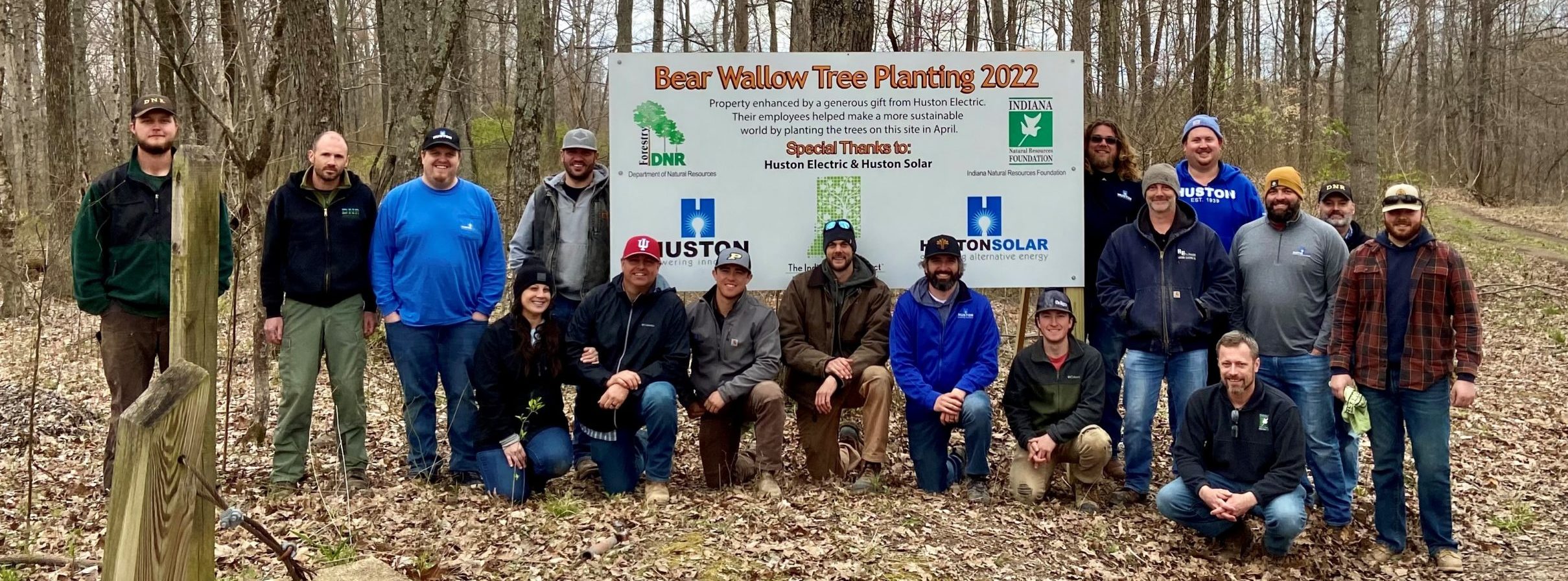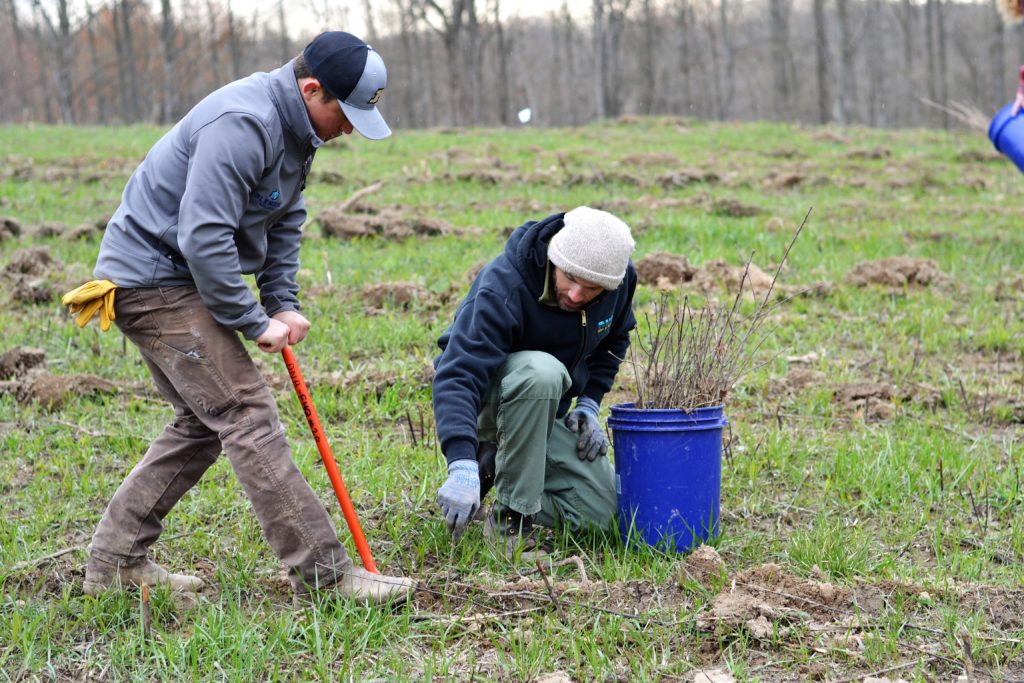Growing Indiana’s Forests with Huston Solar and the Division of Forestry

As the leaves begin to take on hints of red and orange and the weather begins to cool, it’s easy to appreciate the beauty of Indiana’s outdoors. With fall right around the corner, we’re taking time to look back to the spring when Huston Solar joined us to plant 2,000 trees in Morgan-Monroe State Forest.
The group of Huston Solar employees and partners traveled from all corners of the state to take part in their first tree planting. Thanks to exceptional preparation, organization, and guidance from Division of Forestry staff, the group made quick work of adding the saplings to the rolling hills of Indiana’s largest state forest. Part of a successful year for the Indiana Tree Project, the day in the forest created a lasting impact on Indiana’s public lands.

Huston’s inspiration for partnering with the INRF and supporting the Indiana Tree Project is rooted in environmentally friendly initiatives.
“Huston has a green initiative to plant one tree for every kilowatt of solar installed,” said Chris Boyles, solar division manager at Huston Solar. “Partnering with the INRF was the most efficient way to accomplish this goal.”
While Huston Electric has operated in the Hoosier state for more than 80 years, Huston Solar is a relatively new division for the company. As they continue their venture into the solar energy space, Huston seeks to give back and have a meaningful impact in Indiana communities. The Indiana Tree Project is a perfect fit for their goals because their work will benefit Hoosiers for generations to come.
“We are definitely planning to do this every year with the INRF,” added Boyles. “We are already excited to get together next year.”
Thanks to their efficient planting, the group had ample time to explore the forest during the overcast morning. Often one of the highlights of the tree plantings, the Division of Forestry led hike gives the volunteers a chance to ask questions and learn about forest management and conservation.

Wandering through the forest gave the volunteers a glimpse into both the future and the past. With mature trees towering above, the group learned about the history of the forest from experienced foresters. In the same walk, they could envision what their work will look like as the trees mature and create important habitat.
One recurring point of conversation during the walk was the importance of young forests. Indiana State Forester Jack Seifert explained that while we all can appreciate the beauty of a dense, mature forest, young forests provide vital resources to numerous wildlife species and pollinators. Wild turkey, ruffed grouse, and American woodcock are just a few examples of the species that rely on young forests for feeding and brood rearing.
“We had a fantastic time,” Boyles said. “We didn’t know what to expect coming into this event, but it was very well organized and informative.”
The trees planted by Indiana Tree Project volunteers last spring will continue to grow, and as they do, so will Indiana’s natural legacy. The generous support of our donors and partners helps us protect and preserve that legacy for generations to come.
